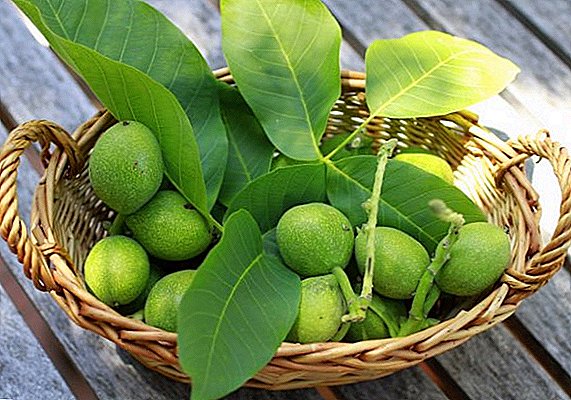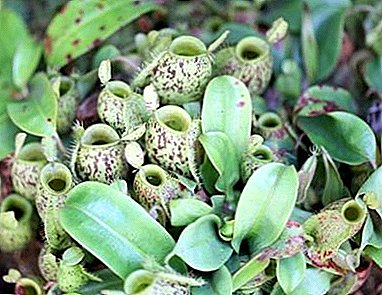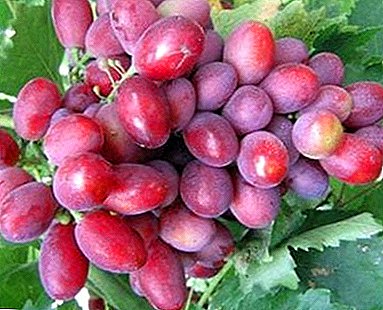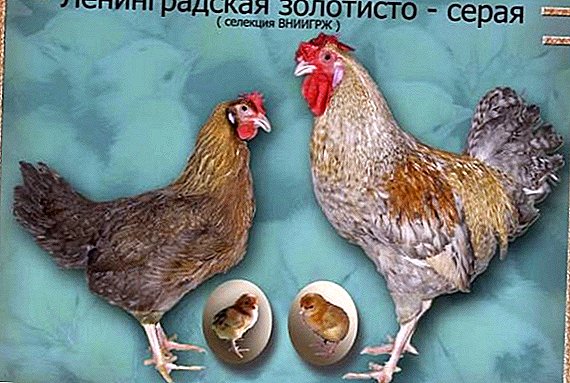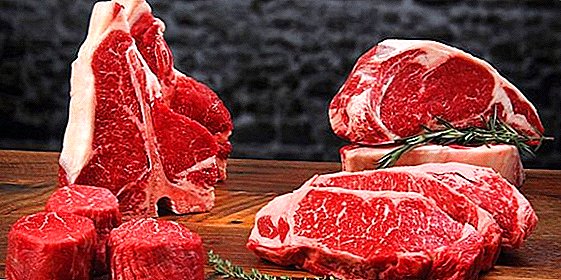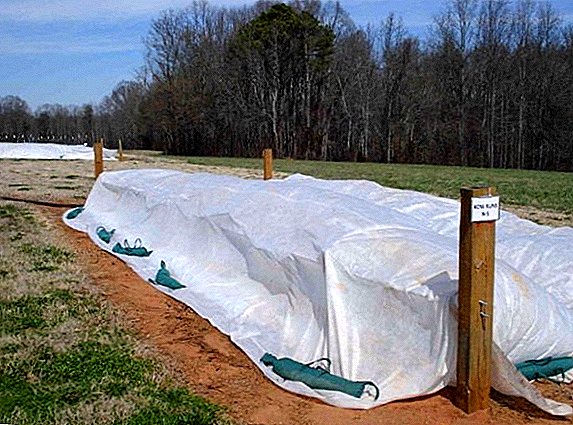 Owners of areas with blackberry planting, especially for beginners, often have questions in the fall: should bushes be sheltered for the winter, and if so, when to do it. This article is devoted to the answers to these questions. We will tell you about what materials are best suited as covering materials, when to cover and how to do it correctly.
Owners of areas with blackberry planting, especially for beginners, often have questions in the fall: should bushes be sheltered for the winter, and if so, when to do it. This article is devoted to the answers to these questions. We will tell you about what materials are best suited as covering materials, when to cover and how to do it correctly.
What should take care in the fall before the shelter
In order to make the blackberry easier to hibernate, it is necessary before shelter:
- Continue to water the bushes after harvesting until the onset of cold weather, if the weather is dry.
- Thin the shoots, cutting those who have already given the harvest, as they served their own, as well as young branches. On 1 bush enough from 6 to 8 branches. The remaining branches are shortened by about 20 cm.
- Weed the weeds, loosen the ground.
- Fertilizing potash fertilizers without chlorine will make wintering easier.
- Sprinkle the soil with leaves or sunflower husk to protect the roots and retain moisture.
- Remove the plant from the supports and gently press to the ground. The closer to winter, the bushes will be more brittle, so you need to remove them earlier. If the plant is straight growing, you need to bend down gradually, making the top heavier with any weight.

Important! To avoid the spread of diseases and pest breeding, blackberry bushes should be thrown into the fire.
When is the best time to start shelter
Blackberry bushes freeze at a temperature of about -17 ° C, a sharp drop in temperature is especially dangerous, which can destroy the plant even at -10 ° C. The best time for shelter comes at a time when the temperature is constantly kept at -5 ° C, that is, usually in late October or early November (the time interval may be different depending on the region).  If you cover the bushes ahead of time, then under the influence of heat, they will continue to grow, and in the absence of light and ventilation, young growth will rot and rot. The decay of roots and ground shoots contributes to the condensate formed under the shelter from excess heat and lack of air.
If you cover the bushes ahead of time, then under the influence of heat, they will continue to grow, and in the absence of light and ventilation, young growth will rot and rot. The decay of roots and ground shoots contributes to the condensate formed under the shelter from excess heat and lack of air.
Important! High humidity is a companion of fungal diseases.Thaws are dangerous because the resulting moisture turns into ice during subsequent frosts, and the blackberry dies.
How can you hide the blackberry for the winter
For shelter you can use handy or purchased materials.
Familiarize yourself with the rules for sheltering grapes, roses, apples, weigels, hydrangeas, figs, lilies, thujas and raspberries for the winter.
Handy materials
As scrap materials for shelter fit:
- The soil - this view requires a lot of time, but gives a good effect. Among the drawbacks are the difficulties with removing this type of shelter in the spring - the spines can scratch hands, and the remnants of the soil at the tops of the bushes cause increased growth of side shoots.
- Snow - in conditions of a snowy winter, it will reliably protect the plant, however, in the event of a thaw, it can be a dangerous source of excess moisture, which will freeze and damage the plant upon the onset of cold weather.
- Vegetable botva - used dried and healthy, which is harvested in the process of harvesting vegetables.
- Hay and straw - both materials are easy to use, it is easy to remove them in the spring. Of the minuses - such a shelter can attract mice that readily eat blackberry bushes for wintering.
- Fallen leaves - this species is characterized by low labor intensity, but here it is important not to cover foliage from fruit and berry trees, since the larvae of pests can be transmitted with it.
- Corn Leaves - this material is characterized by rigidity, therefore it can protect the shrub well, it also absorbs water poorly. The leaves are dried after harvesting the corn or used dried in a natural way, placed in a thick layer. Keep the leaves healthy and free from damage.
- Sawdust and shavings - It is not recommended to use due to the fact that they reduce the nitrogen content, acidify the soil, strongly absorb water, which then freezes with an ice block, and contribute to the reproduction of pests.
- Peat - characterized by a high degree of moisture-absorbability, therefore it does not fit well.
- The branches of coniferous trees - A thick layer of this cover allows the bush to breathe, retains heat well, scares rodents and insect pests.
- Husk of sunflower, buckwheat, rice - The material is good because it absorbs water poorly, but it will take a lot to cover it.
 The positive side of the use of scrap materials is the lack of financial costs, the negative - the impossibility of their use in large areas.
The positive side of the use of scrap materials is the lack of financial costs, the negative - the impossibility of their use in large areas.Did you know? In England, there is a legend that blackberries can only be harvested before October 11 - on this day the devil spits on her, and people who eat berries picked after the specified date become unclean.
Synthetic materials
You can cover the blackberry with the help of synthetic materials purchased in the store:
- Film - Its thick layer will serve as a good shelter in a snowy winter, but it can create problems if a thaw occurs. In this case, under it a lot of moisture and heat is formed, which will lead to decay. Snow-free winters are dangerous, in this case there is a greenhouse effect, which is created on a frosty day by the sun and forms a high temperature under the film. After sunset, a drop in temperature leads to frostbite. As an option - you can put paper under the film or sprinkle it on top with sawdust.
- Ruberoid, pieces of old linoleum - ease of use of this type of cover resists fragility during frosts.
- Felt or sintepon - this species is suitable only for northern latitudes, where snowy and frosty winters, as the material can gather moisture in the thaw and the blackberry will rot.
- Burlap - is used as an additional covering material in conjunction with improvised means of shelter.
- Nonwoven fabric (spunbond, agrotex, lutrasil, agrospan) - the advantage of this type of materials is good protection against frost and the ability to pass air. It does not create a greenhouse effect, so you can cover them before the start of frost, and shoot - long after they end.
- Styrofoam - it protects well, but it is expensive and is easily cracked by mice.
Did you know? Styrofoam 98% consists of air.
 These types of shelter can protect large areas of planted berries, they can be used several times, but they require some financial investments.
These types of shelter can protect large areas of planted berries, they can be used several times, but they require some financial investments.How to cover
After the end of the preparatory activities, the blackberry is pressed as close as possible to the mulched soil, trying not to damage the fragile branches. If you can not bend the bushes, they are covered with boxes of plywood, slate. To prevent the film or non-woven materials from sticking to the plant, a layer of mulch from scrap materials is poured under them or a framework is constructed that prevents the materials from coming into contact with the branches and leaves.
Learn how to choose the right covering material and what is agrospan and agrotex.
Non-woven material can be black and white, the difference between which is only that the white color better reflects the sun's rays and is suitable for snowless winters. It also happens to be of different density: a material with a density of 100 g per 1 square meter. m can be laid in 1 layer, 50 g per 1 square. m - in 2 layers. It is often recommended to cover 2 layers of a thinner version. Choosing the width of the material, you should stop at 1.6 m.
Important! No need to try to wrap the shrub in the covering material, as in a diaper, warmly gives the heated soil, and not the flooring, so try to cover more territory around the plant.
 The edges of the flooring should be pressed to the ground with something heavy (with stones or sprinkled with earth) so as not to be carried away by the wind. It is recommended to put a layer of snow on top of the flooring in order to keep more heat.
The edges of the flooring should be pressed to the ground with something heavy (with stones or sprinkled with earth) so as not to be carried away by the wind. It is recommended to put a layer of snow on top of the flooring in order to keep more heat.Do I need to cover the frost-resistant varieties of blackberry
Frost resistance characterizes the ability of the blackberry to withstand low temperatures. However, the fact that the plant will survive, does not mean that it will not suffer, - in little snowy winters can undermine the buds and the tips of the shoots, as a result, the harvest will be poor. Of the frost-resistant varieties, the most famous is Agave, which withstands more than -20 ° C. But the young branches of this variety can freeze in such cold weather. Although spring in their place will grow new shoots, but this year they will not yield a crop. Based on the foregoing, frost-resistant blackberry varieties also need shelter, otherwise a weakened plant will not please you with berries.
Read also about such cold-resistant varieties of blackberry as: Chester Thornless and Giant.
Thus, if you want to get a good harvest of blackberry, the bushes for the winter must be covered, but it must be done correctly. For small plantings suitable materials are suitable, for larger scale synthetic materials (white agrofibre). However, do not cover too early, otherwise the plant will rot and die. Follow our recommendations, make the right shelter for blackberries for the winter and you will definitely feel the difference.
Video: blackberry-how to properly cover
Reviews




